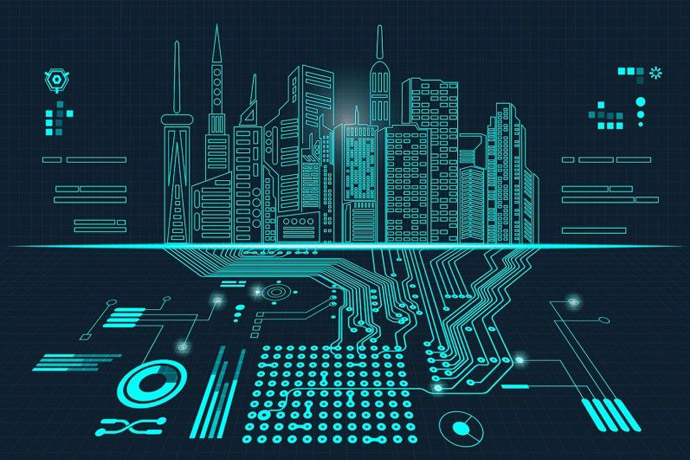The benefits of the smart technology in the real estate sector
Reading Time : 7 minutes
Change can be a good thing when it benefits the masses. We are seeing that one of the biggest challenges is getting occupants back in the office. There is a lot of hesitation for many reasons, but who blames them? Let’s face it, we all enjoyed making a fresh pot of coffee, ditching the commute and getting the day started in the comfort of our own home. We have seen a significant increase in vacancy and sub-lease rates that have been instigated due to the pandemic. But as property owners are re-evaluating workplace strategies, we need to change the narrative and develop custom solutions in recognition of the fact that one size does not fit all. Now, we can create a hybrid of workplace solutions that not only meet safety and spacial requirements - but can actually improve the wellbeing and productivity of a workforce whilst supporting environmental targets.
Real estate occupancy is tied heavily on both the workforce and the workplace, as companies sort out how and where their employees work and continue to tailor their real estate profile accordingly. With the pandemic paving the way for more innovative ways to safeguard your brick and mortar, business operations and employees, other things to consider are elements within the work environment – such as air quality, carbon emission, waste, water and occupancy.
Smart technology comes into play here.
Software is now available to manage properties remotely, meaning the property or facilities manager is not required to be on site, but can access crucial building information from any device and from anywhere. Reaping the benefits of smart spaces and remote applications enables the monitoring and managing of entire portfolios by analysing the real-time data of these important elements, 24/7 and 365.
In an article shared by one of our partners, Released, “82% of millennials will feel safer returning to offices with real-time indoor air-quality transparency.” When you give that sense of transparency to the people, you give them back control, the control they have been missing over the past few years.
What are some the benefits of smart tech?
Help improve & manage our carbon footprint
There is growing trend of IoT and smart building tech driven by the global movement towards energy savings and reducing carbon emissions. Your company may also already be working towards complying with the Energy Savings Opportunity Scheme (ESOS) regulations. Real Estate businesses who have considered their role in achieving ESG (Environmental, Social and Governance) standards - or any new legislation - have probably thought about implementing smart technology. It will bring them a much greater understanding of their energy use, property assets and highlight other areas where reductions and cost-savings can be made. For example, Zillow, a real estate company popular for renting and selling out houses, recently released virtual tours as an alternative to people viewing properties in person. Now agents are increasingly finding ways to conduct virtual tours or record tours for their clients, cutting out the drive-time for such appointments. Being able to see everything that is happening in one central display means you can react instantly and implement changes to reduce energy, carbon emissions and environment use.
Streamline operations & facilities management
ESG targets elements like energy usage, waste and temperature and so many more, which can be monitored and managed on a routine basis. When managing many properties at once, it becomes less of a routine and more like a 24/7 job. Downtime costs for industrial manufacturers are in the billions with almost half of the time due to faulty equipment or failure. According to recent manufacturing reports, Forbes reported the problem of equipment being down will cost owners an estimate of $50 billion each year. Current sensors and smart applications can help improve predictive maintenance, highlighting potential issues with machinery before it fails altogether. Predictive equipment and routine checks using technology can essentially help keep production up and running.
Reading into Smart Spaces, “Chevron is rolling out digital twin tech for its oil fields and refineries and expects to save millions of dollars in maintenance costs.”
A digital twin is a 3D replica of a building space which can be viewed from a phone, tablet or laptop. Physical sensors are also placed inside the building and collate real-time data, which is analysed within the software and shown in a simple dashboard to the viewer alongside the 3D view or map. This type of technology enables scenarios to be created to plan for a crisis, can alert a manager if facilities are about to fail and it can even notify the maintenance team and insurer automatically about a problem, such as a water leak. It can provide significant cost-savings in maintenance and downtime.
Improve the working process
The majority of today’s world have finally accepted that you don’t have to physically be in an office to do an office job. Processes can still be managed from anywhere with the right devices and resources. Being able to see exactly how and what smart tech can do for your business is a really useful exercise. The ability to monitor power usage trends means you can develop realistic targets for future management. The detailed data means you can look at specific machinery, rooms or offices and develop action plans for energy reduction and occupancy retention. The data can also be a helpful way to reduce bottom-line expenses, extend the life cycles of assets and ultimately improve staff morale.
Learn more about Secure, Retransform’s digital-twin smart technology.


